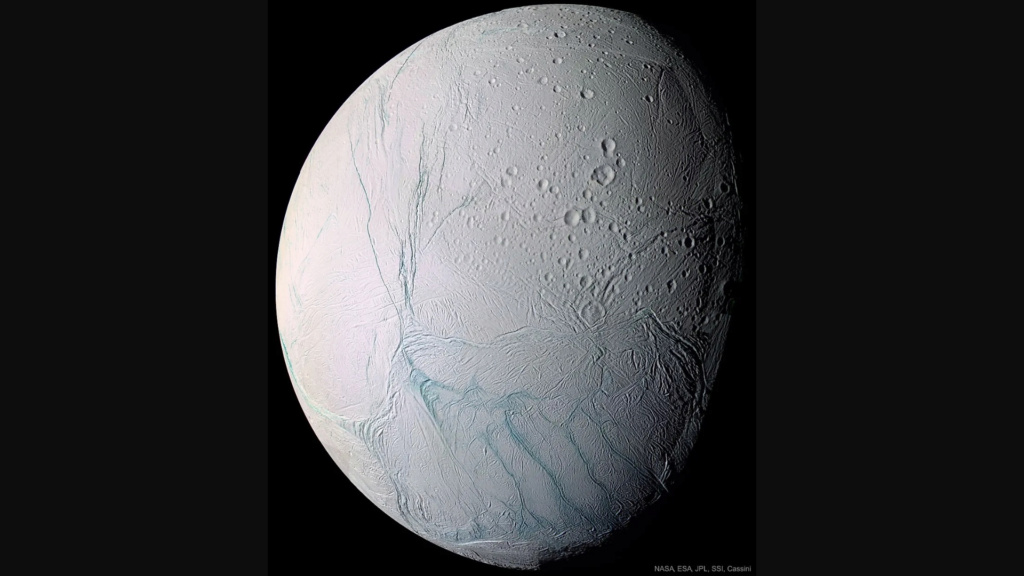A study suggests the presence of aliens on one of Saturn's moons

A new scientific study indicated that if there are aliens in our solar system, it will be the fourteenth moon in terms of distance from Saturn, which is called "Enceladus".
And the "James Webb Observatory" of the US space agency "NASA" revealed the presence of a large cloud of exciting water vapor in the south pole of this moon.
The researchers say that the cloud of water vapor spreads over a length of about 6,000 miles, which is equivalent to the distance between Los Angeles and Buenos Aires.
It revolves around Saturn, about 100 moons, but "Enceladus" is the only one that contains an ocean of liquid water, which makes it similar to Earth.
It is not clear what caused this huge cloud to occur, although scientists believe that the ocean could be home to alien life.
Enceladus appears in space as a beautiful white atmosphere, covered in a layer of ice that is at least 12 miles thick.
It is now known that water vapor and some solid particles such as ice crystals are released from fractures in the frozen surface, which is called the "tiger stripes".

But scientists were amazed at the size of the cloud, which is seen for the first time as water emerges from it from a great distance.
A member of the team of scientists at NASA's Goddard Space Flight Center, Geronimo Villanova, said: "When I was looking at this information, I started thinking at first that I was wrong. It was shocking, as a cloud larger than the size of the moon orbiting the Earth was discovered." 20 times, and this cloud extends far beyond the area of its appearance in the south pole of the moon.
Enceladus is one of the few places in our solar system that contains liquid water, along with Earth and Jupiter's moon Europa, making it a target of interest for astronomers.
Enceladus orbits Saturn at a distance of 148,000 miles, between the orbits of two other moons, Mimas and Tethys.
The orbit of "Enceladus" around Saturn is relatively fast, with a speed of about 33 hours for a full cycle, according to Villanova, who wrote this study describing what was recently discovered about the "Enceladus" moon.
Source: websites

